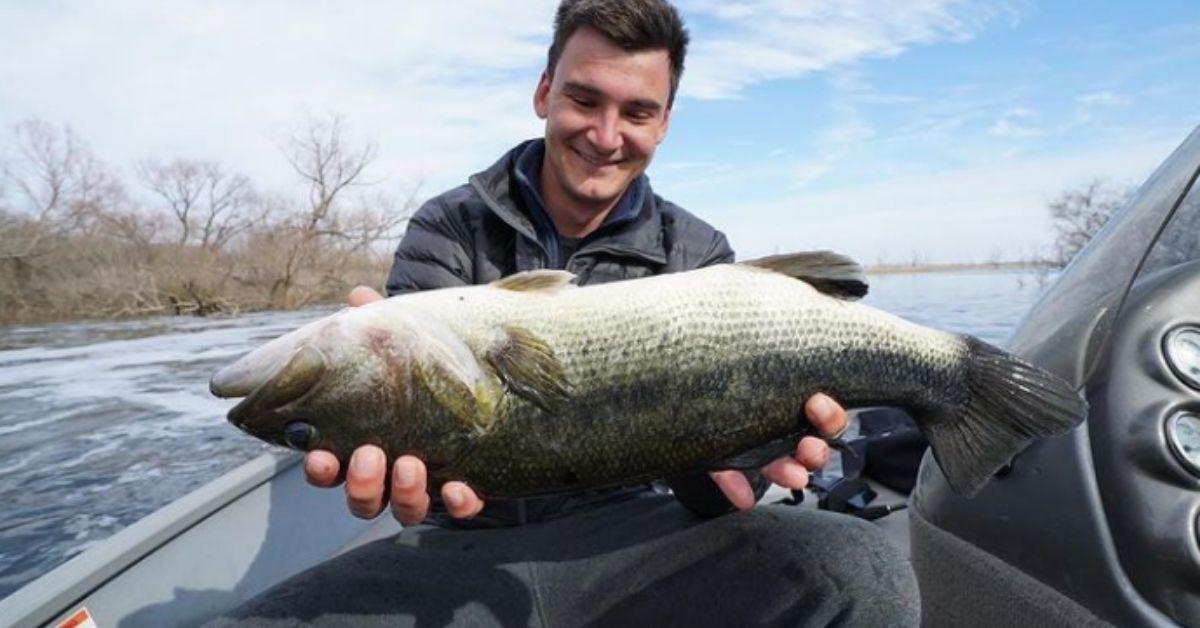Top To Bottom Spring Fishing Tips To Catch You More Bass
During the spring season, bass are highly active and feeding aggressively at various depths, making them susceptible to different types of lures as the water temperature rises. While moving lures such as crankbaits and spinnerbaits are generally effective, there are times when bass prefer slower-moving lures.
Moving baits like crankbaits and spinnerbaits are typically the go-to choice for bass fishing during the spring season. However, when the water temperature drops below 60 degrees or during cold-front situations later in the spring, slower presentations are preferred by bass. While soft plastics or jigs are effective options in these conditions, it is still possible to catch bass on hard plastic lures throughout all phases of spring weather and water conditions. By adjusting your presentation and experimenting with different lures, you can increase your chances of success and make the most out of your spring fishing trips.
Here are 3 techniques to catch bass during the spawn in all levels of the water column.
Banging The Bottom
Finesse Jig
Like the Tight Rope Firework Super Jig, a small finesse jig, paired with a small soft plastic, is a deadly combo for fooling bass in the Spring.
For the slowest presentation when spring fishing in water below 60 degrees you can drag a jig and plastic craw along the bottom, but you can also keep in contact with the bottom retrieving a medium-diving crankbait in crawfish colors at a steady pace. Weighting the crankbait with adhesive lead strips or tape will help keep the crankbait close to the bottom even when the lure is paused for a couple of seconds after banging it off rocks.
Slowly crank the weighted crankbait along the bottom so it bangs into rocks and kicks up silt, similar to a crawfish scurrying along the bottom. Your retrieve should vary depending on the rocks you are targeting. If you are fishing chunk rocks, run the crankbait at a steady pace along the rocks. However if the area has occasional rock piles, stop the lure when it hits those rocks.
The weighted crankbait technique works best when bass are staging on main lake chunk rock banks during the prespawn. The crankbait pattern usually lasts until the water temperature climbs to 60 degrees, but it can still be effective in certain situations once the water warms. A cold front that drops the water temperature five or six degrees causes bass to move away from the bank where the crankbait becomes the most effective lure again for these fish.
Chugging On Top
Topwater Lures
Topwater lures are a great way to cover a lot of water while drawing exciting surface strikes from fish that are patrolling shallow areas. As the water temperature heats up, the topwater bite also tends to improve.
I remember a prespawn topwater tactic I learned several years ago while fishing with a friend at Lake Of The Ozarks. Despite the water temperature being around 57 degrees, my friend had success catching bass by using a topwater chugger, while my soft plastic jerkbaits were being ignored by the fish.
The key to his technique was fishing the topwater lure in clear water and retrieving it slowly without making a big splash. During our outing, we found that the bass were suspended under boat docks in pockets along spawning banks. Although the fish were getting ready to spawn, the cool and cloudy weather that day discouraged them from moving towards the bank. However, the darker skies made the bass more aggressive in the clear water, while still being cautious about certain offerings. To prevent spooking larger bass, my partner made long casts with his topwater chugger.
During our outing, bass were suspended under boat docks in pockets along spawning banks. The fish were getting ready to spawn, but the cool, cloudy weather that day discouraged any move to the bank. The darker skies made bass more aggressive in the clear water but were still leery about certain offerings. So my partner prevented spooking larger bass by making long casts.
Calm water was another key because it helped the bass locate the slow-moving lure on the surface. My partner barely twitched the chugger so it made small spits of water on the surface rather than the chugging or plopping noise the lure usually makes.
This tactic also works well when bedding bass ignore your tube bait or jig. Rather than continually throwing at the visible fish, twitch the topwater slowly around any nearby cover to trigger strikes from bigger bass hiding in those targets.
Suspending Stickbaits For Spawners
During the spawn, a suspending stickbait is another hard-plastic lure that will catch bass. It is effective for spawning bass because the lure’s shape imitates a predator fish better than a tube bait does.
The imposing profile of a stickbait makes the lure appear more threatening to bass guarding a spawning bed. If you have a bass that is really protective of the nest, a lot of times they will take a small bait like a tube bait or finesse worm, suck it in and blow it out before you can set the hook. If you put an imposing bait like the stickbait in front of the fish or right over the bed, even if the bass swims up and grabs it, the fish can’t spit it out quickly because it gets a hold of three sets of treble hooks.
A key to catching spawning bass on a suspending stickbait is to get the lure to stay in the strike zone. When you see a bass on the nest, throw the stickbait past the fish and drag it to the nest. Then let the lure hover over the bed to force the nesting fish into attacking the intruder. If the bass continues to ignore the lure, trigger a strike by shaking your rod to make the lure tremble like a frightened baitfish.
Updated March 1st, 2024 at 11:16 AM CT


